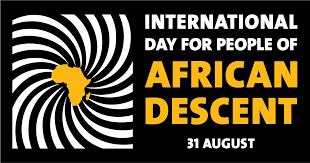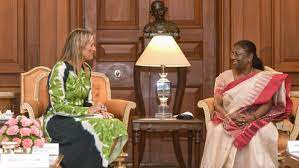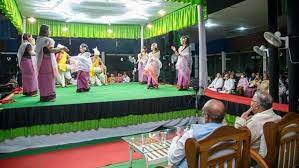
Current Affairs is the most important area in all competitive exams. But the difficulty level is very high. That’s why; many aspirants get confused, how to select Current Affairs for Preparation of Competitive Examination? In this Post, Daily Current Affairs 22 August 2022, we have tried to cover each and every point and also included all important facts from National/ International news that are useful for upcoming competitive examinations such as UPSC, SSC, Railway, State Govt. etc.
Current Affairs for Competitive Exam – 22 August 2022
IAF contingent to participate in Exercise Pitch Black in Australia
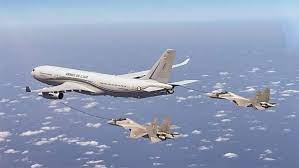
An Indian Air Force contingent has reached Australia to participate in Exercise Pitch Black 2022. The exercise is being held in Darwin till the 8th of next month. This is a biennial, multi-national exercise hosted by the Royal Australian Air Force.
The Indian Air Force contingent comprises over 100 air warriors, deployed with four Su-30 MKI fighters and two C-17 aircraft.
They will undertake multi-domain air combat missions in a complex environment.
65th Commonwealth Parliamentary Conference being held in Halifax, Canada

An Indian Parliamentary delegation led by Om Birla will be attending the 65th Commonwealth Parliamentary Conference scheduled to be held in Halifax, Canada from August 20-26.
The Conference will also be attended by 23 Presiding Officers and 16 Secretaries from State Legislatures in India who are also members of the CPA.
Om Birla will participate as a panellist in Workshop ‘C’ titled “A People’s Parliament: Accessibility through Innovation”.
India, Australia conclude maritime exercise near Perth
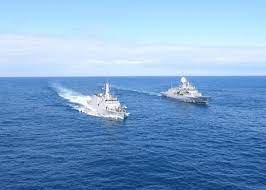
The Maritime Partnership Exercise (MPX) between the navies of India and Australia concluded.
INS Sumedha participated with HMAS Anzac in the exercise reaffirming the strong navy-to-navy links and interoperability between Indian Navy and Royal Australian Navy.
The MPX included cross deck landing of helicopters, tactical manoeuvres and a farewell steam past. Indian Navy’s INS Sumedha was docked at Perth in Australia to celebrate India’s 76th Independence Day.
India’s star Olympic football captain Samar ‘Badru’ Banerjee’ passes away

Former India football team captain Samar ‘Badru’ Banerjee, passed away. He led the country to a historic 4-place finish in the 1956 Melbourne Olympics. Fondly known as ‘Badru Da’, he was suffering from Alzheimer’s, Azotemia and high-blood pressure-related ailments.
Besides guiding Mohun Bagan to several trophies including their 1st ever Durand Cup (1953), Rovers Cup (1955), Banerjee has also won the Santosh Trophy twice as a player (1953, 1955) and once as coach (1962).
Geothermal energy to be used to supply energy to Ladakh
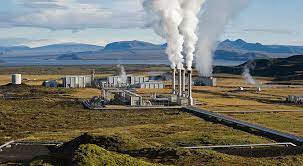
State-owned Oil and Natural Gas Corporation (ONGC) on Monday said it will implement India’s maiden geothermal field development project in Ladakh that will use the heat generated by the Earth’s core to generate clean energy. “A memorandum of understanding (MoU) to formalise this has been inked by ONGC Energy Centre (OEC) with the Union Territory of Ladakh and Ladakh Autonomous Hill Development Council, Leh on February 6,” the company said in a statement. At 14,000 feet in Ladakh, ONGC is getting ready to pump geothermal energy. State-run explorer ONGC has set out on a mission to harness the steam streaming from the earth’s core at Puga, a lonely valley off the road to Chumar on the de facto boundary with China, at a height of more than 14,000 feet. In India, geothermal energy is nothing new. The Indian government first provided a report on the nation’s geothermal hotspots in 1973. This occurred after shallow drilling exploration by the Geological Survey of India (GSI) revealed prospective hot spring and geothermal areas. According to estimates, India has the ability to produce 10 gigawatts of geothermal energy.
Geothermal energy in Ladakh: Key Points
- A sea of molten rocks emits heat from deep within the earth’s crust. They can occasionally erupt as volcanoes or hot springs. It is intended to capture some of this enormous amount of heat energy and transform it into electricity.
- Geologists first look for geothermal energy hotspots, and then they look for areas of broken rock where heat can escape.
- Next, wells are drilled to release thermal energy as steam and hot water, which are then used to power turbines and generate electricity.
- Since the heat emitted from the earth’s interior is virtually inexhaustible and is anticipated to last for billions of years, geothermal energy is regarded as renewable. Additionally, it is accessible 365 days a year, unlike sun and wind.
- Compared to coal and oil, geothermal energy produces about 80% less greenhouse gas emissions. Unlike wind and solar, a geothermal plant is constantly operational.
Geothermal energy in Ladakh: Puga Valley
The Puga Valley in Jammu and Kashmir’s Ladakh region was one of the places that had a lot of potential for geothermal energy. Puga is a component of the Himalayan geothermal belt and is located in the southernmost region of Ladakh. Hot springs, mud pools, sulphur deposits, and borax deposits are all signs of geothermal activity in Puga area.
China now has geothermal energy projects active in different regions of the Tibetan Plateau with comparable geographic characteristics. The expense of geothermal energy exploration is high. The main obstacle is cost reduction so that even a small 5 kilowatt plant can electrify rural regions and make it feasible to build minor geothermal fields in places like Puga Valley.
Odisha to prepare wildlife management plan in newly allotted coal blocks
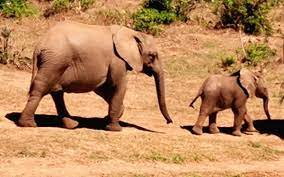
The Odisha government has decided to prepare a comprehensive wildlife management plan through national-level institutes for newly allotted coal block areas. The developments come keeping in view the safety of wild animals including elephants.
The decision in this regard was taken at a meeting chaired by Chief Secretary S C Mohapatra to engage reputed organizations like the Wildlife Institute of India or the Indian Institute of Science.
Flipkart signs pact with IIMR to groom FPOs, SHGs
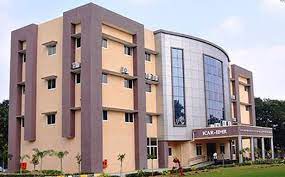
Flipkart has signed an agreement with the Indian Institute of Millets Research (IIMR) to give Farmer Producer Organizations (FPOs) and Self-Help Groups (SHGs) access to markets.
As part of the partnership, Flipkart aims to empower local farming communities and SHGs by providing a pan-India market access to more than 400 million customers.
ICAR-IIMR will extend support with infrastructure and necessary approvals to take the partnership forward.
RBI cancels licence of Deccan Urban Co-operative Bank
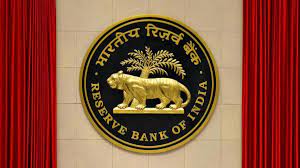
The Reserve Bank of India has canceled the licence of Deccan Urban Co-operative Bank, Karnataka the lender does not have adequate capital and earning prospects.
As per the data submitted by the bank, more than 99 percent of the depositors are entitled to receive the full amount of their deposits from Deposit Insurance and Credit Guarantee Corporation (DICGC).
The cooperative bank ceases to carry on banking business, with effect from the close of business on 18 Aug.
Manisha Kalyan becomes 1st Indian to play in UEFA Women’s Champions League

Young striker Manisha Kalyan has become the 1st Indian footballer to play at the UEFA Women’s Champions League.
She made her debut for Apollon Ladies FC in the European Club competition in Engomi, Cyprus. She replaced Cyprus’ Marilena Georgiou in the 60th minute at the Makareio Stadium. She was recently awarded the AIFF Women’s Footballer of the Year for the 2021-22 season. Kalyan is the 2nd player from Gokulam Kerala to sign for an overseas club.
India and China relations going through very challenging times: Jaishankar
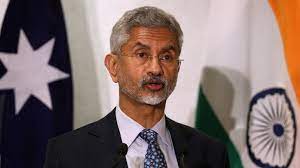
External Affairs Minister S Jaishankar said on Thursday that the relationship between India and China is going through an “extremely difficult phase” after what Beijing has done at the border and emphasised that the Asian Century will not happen if the two neighbours could not join hands. He claimed that both nations have border accords dating back to the 1990s that forbade sending large numbers of troops into restricted areas, but Beijing had ignored those pacts. It is no mystery that India is currently experiencing extremely difficult circumstances, primarily as a result of China‘s violations of agreements India struck with them in the 1990s that prohibited sending sizable numbers of troops into restricted areas.
India and China Relations: Key Points
- It is no secret that India is currently going through a very tough time, mostly because China has violated agreements India made with them in the 1990s that forbade sending large numbers of troops into areas that are off-limits.
- What took place in the valley of Galwan is unresolved between India and China. Relationships are a two-way street, and a lasting partnership cannot be a one-way street. That issue hasn’t been resolved, and that has obviously been casting a shadow.
- India require each other’s respect and compassion. It is no secret that we are currently going through a really difficult time, said S Jaishankar.
- In eastern Ladakh, India and China are embroiled in a protracted border conflict.
- After the Chinese gathered a sizable troop force along the LAC and penetrated the territory claimed by India, the conflict grew more heated in 2020. Along the border, China has been building infrastructure and keeping a sizable force presence.
- Because of what Beijing did at LAC, according to Jaishankar in Bangkok, the relationship between India and China is going through a “very tough moment.”
To maintain calm along the LAC, India and China have signed a number of border accords.
India and China: Border agreements
New Delhi and Beijing, India and China pledged to resolve the border crisis through amicable and peaceful negotiations in a document signed on September 7th, 1993. The agreement states that no party shall use or threaten to use force against the other. The parties also agree to rigorously respect and adhere to the line of actual control that separates them. No actions taken by either party shall cross the threshold of actual control.



